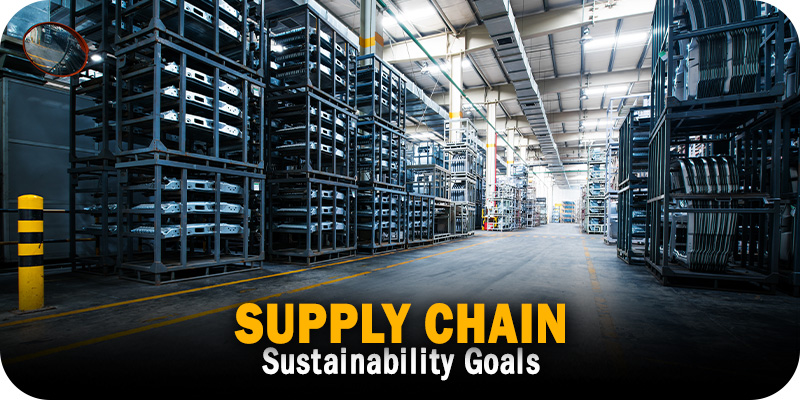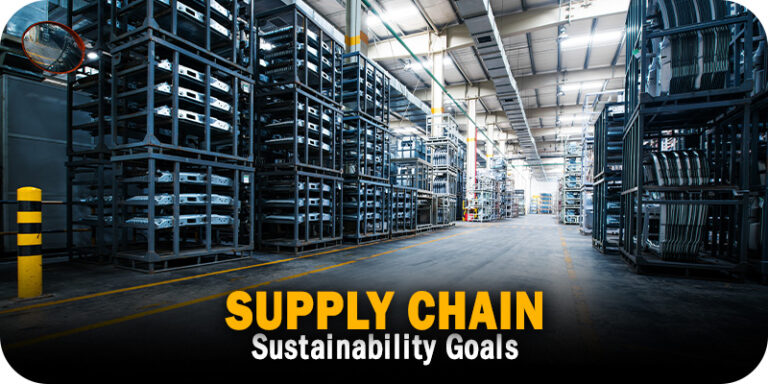Want to Meet Supply Chain Sustainability Goals? Focus on Production.

As part of Solutions Review’s Contributed Content Series—a collection of articles written by industry thought leaders in maturing software categories—Berk Birand, the co-founder and CEO at Fero Labs, explains how focusing on production can help companies meet their supply chain sustainability goals.
With many companies seeking to cut emissions as part of ambitious new ESG targets set by corporate leadership, improving the quality of global supply chain data has become a significant area of focus. Compiling more accurate and comprehensive data sets can help identify emission hotspots and assess environmental impacts, guiding enterprises to implement targeted measures that minimize carbon footprints. But while this focus enables progress toward a net-zero business ecosystem, it overlooks another equally vital emission-cutting stage: product production.
Supply chain optimization typically focuses on activities occurring before and after production rather than the production process itself. Minor changes to production processes—like adopting circular economy practices and improving efficiency with new software—can dramatically cut emissions across the supply chain. And it doesn’t have to be expensive or complicated, either. Here are four changes enterprises can make within the production stage to help cut emissions and meet their supply chain sustainability goals.
1) Adopt Circular Economy Practices
Recycling and reusing waste products in innovative ways decreases reliance on fragile raw materials supply chains. By promoting such practices, enterprises can drive sustainability gains within their supply chain by sourcing recycled material from local markets. By minimizing virgin material use, they can lower costs while reducing their indirect (Scope 3) impact. For example, chemical producers can clean, shred, and melt plastic waste to create pellets or granules or break those waste products down into their essential chemical components through depolymerization or pyrolysis. These recycled components can then be used as new raw materials to produce new plastic products, enhancing sustainability and profits.
2) Use Advanced Analytics to Monitor Energy Consumption
Many new technologies aim to reduce energy consumption during production, which can lower costs and reduce emissions. Alongside optimizing physical heating, ventilation, and air conditioning (HVAC) systems, management teams can implement digital energy management systems (EMS) to monitor and control energy use. These EMS include many advanced analytics capabilities, including real-time energy consumption monitoring, production processes, and equipment performance, allowing factory operators to promptly identify energy-intensive operations to reduce their indirect emissions from purchased energy (Scope 2) footprint.
3) Use AI to Make Production More Efficient
Industrial production processes were generally not designed with sustainability in mind. Therefore, many believe reducing emissions inevitably involves making one or several trade-offs between sustainability and cost-effectiveness. However, while it is true that transitioning to greener production methods or adopting renewable energy sources may incur higher costs, modern AI and machine learning software (ML) can save companies money by finding and eliminating process inefficiencies. Using AI/ML models that take in all the data generated during a given process, engineers can figure out how to produce the same products with less energy or fewer raw materials, targeting Scope 2 and 3 emissions reductions.
4) Invest in Technology to Address Direct Emissions
Ultimately, any supply chain optimization with the goal of sustainability must concretely tackle a company’s direct CO2 emissions or Scope 1 footprint. Companies can consider adopting technologies like carbon capture and storage or alternative methods of production, which emit fewer greenhouse gases. For example, rather than coal in conventional blast furnace steelmaking, direct reduced iron (DRI) based processes can use hydrogen, which, if procured through sustainable supply chains, can result in dramatically lower CO2 emissions. Another example is cement, where industrial heat batteries can store excess heat produced at the kiln and use it when there is demand, reducing the need for burning.
Sustainability as a goal is increasingly in the spotlight. Companies are setting ambitious ESG benchmarks and aiming for better reporting and data. These are progressive steps, but to make meaningful supply chain sustainability improvements, enterprises must think about every stage of the supply chain, including how they produce their products.
Although companies frequently fail to consider the production stage while making supply chain optimization plans, doing so can result in far more meaningful improvements. Adopting measures such as circular economy practices and using AI to make production even more efficient will set enterprises on the road to genuinely transforming their supply chain and achieving their digital transformation—and sustainability—goals.
- Want to Meet Supply Chain Sustainability Goals? Focus on Production. - August 15, 2023

 By
By



















